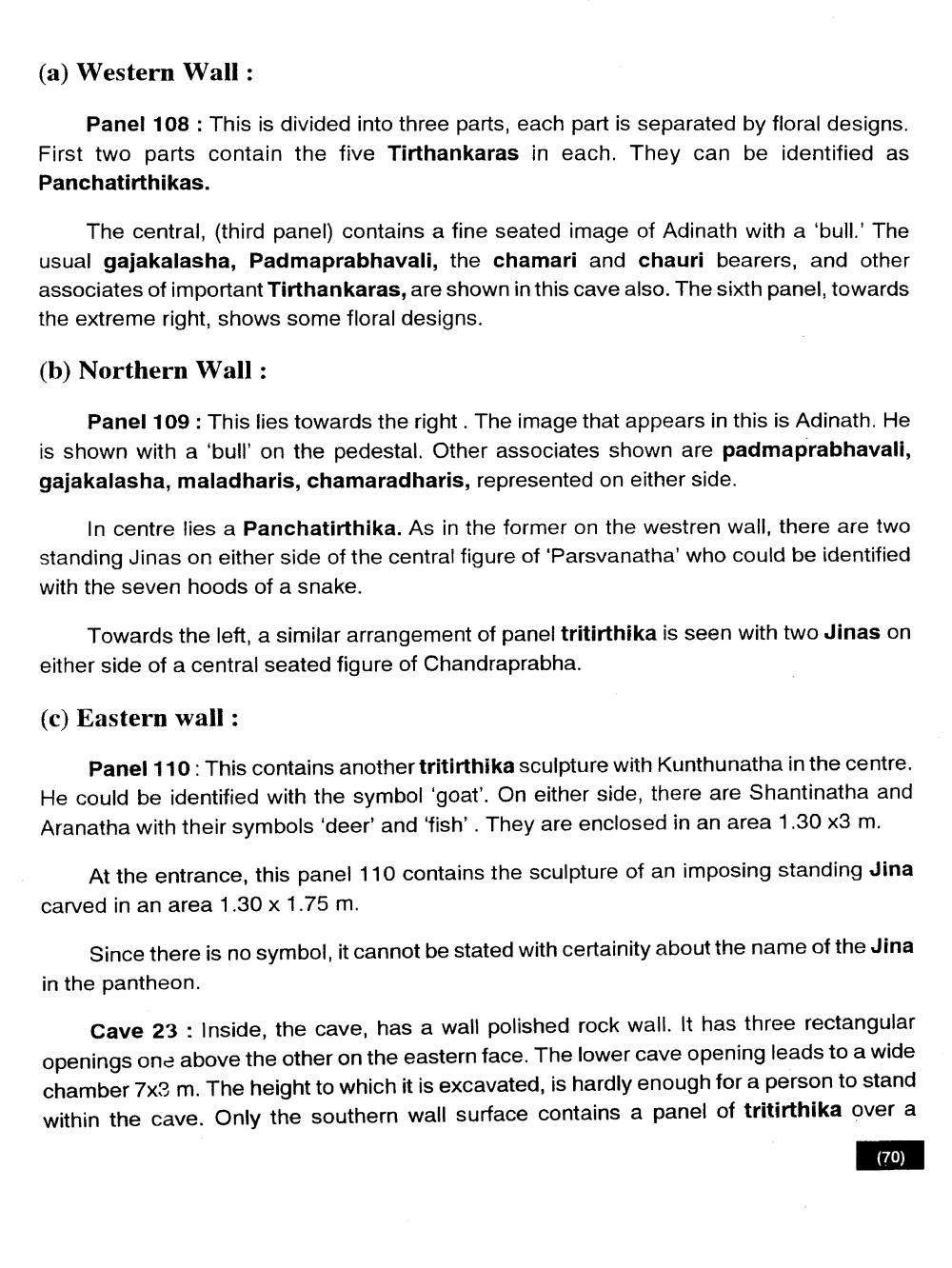________________
(a) Western Wall :
Panel 108 : This is divided into three parts, each part is separated by floral designs. First two parts contain the five Tirthankaras in each. They can be identified as Panchatirthikas.
The central, (third panel) contains a fine seated image of Adinath with a 'bull.' The usual gajakalasha, Padmaprabhavali, the chamari and chauri bearers, and other associates of important Tirthankaras, are shown in this cave also. The sixth panel, towards the extreme right, shows some floral designs.
(b) Northern Wall :
Panel 109: This lies towards the right. The image that appears in this is Adinath. He is shown with a 'bull' on the pedestal. Other associates shown are padmaprabhavali, gajakalasha, maladharis, chamaradharis, represented on either side.
In centre lies a Panchatirthika. As in the former on the westren wall, there are two standing Jinas on either side of the central figure of 'Parsvanatha' who could be identified with the seven hoods of a snake.
Towards the left, a similar arrangement of panel tritirthika is seen with two Jinas on either side of a central seated figure of Chandraprabha.
(c) Eastern wall :
Panel 110: This contains another tritirthika sculpture with Kunthunatha in the centre. He could be identified with the symbol 'goat'. On either side, there are Shantinatha and Aranatha with their symbols 'deer' and 'fish'. They are enclosed in an area 1.30 x3 m.
At the entrance, this panel 110 contains the sculpture of an imposing standing Jina carved in an area 1.30 x 1.75 m.
Since there is no symbol, it cannot be stated with certainity about the name of the Jina in the pantheon.
Cave 23 : Inside, the cave, has a wall polished rock wall. It has three rectangular openings one above the other on the eastern face. The lower cave opening leads to a wide chamber 7x3 m. The height to which it is excavated, is hardly enough for a person to stand within the cave. Only the southern wall surface contains a panel of tritirthika over a
(70)




